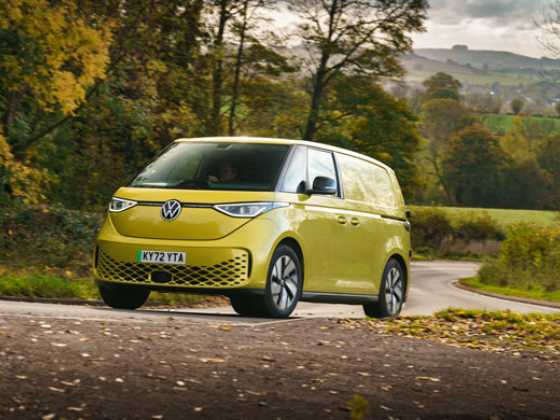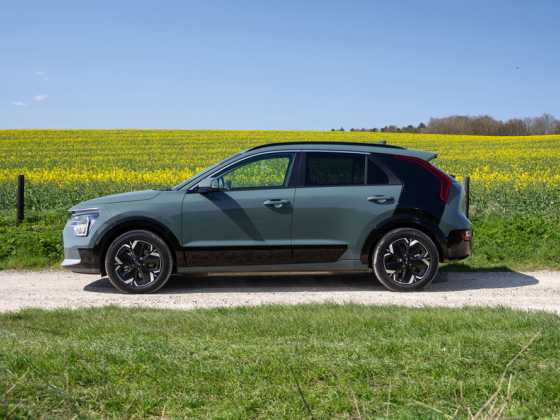No excess baggage
The latest addition to Volkswagen’s Caddy nameplate has low emissions and a host of environmentally-friendly features to focus it on economy. Richard Gooding tests the new small commercial entry to the BlueMotion family
 While most drivers would have heard of Volkswagen’s popular model ranges such as the Polo, Golf, and Passat, few may know of the Caddy. The company’s successful and smallest commercial vehicle, the Caddy first appeared in 1982 as a Mk 1 Golf-based pick-up.
While most drivers would have heard of Volkswagen’s popular model ranges such as the Polo, Golf, and Passat, few may know of the Caddy. The company’s successful and smallest commercial vehicle, the Caddy first appeared in 1982 as a Mk 1 Golf-based pick-up.
Through Polo and Škoda Felicia-based iterations, VW has arrived at today’s version. The latest development is the Caddy BlueMotion. The cleanest, most environmentally-friendly version yet of VW’s small van emits 119g/km of CO2 and has numerous systems to sip less fuel. The Caddy range in general has also just been named as the Association of Car Fleet Operators’ ‘Small Van of the Year’.
Understated elegance
Sharing some mechanical components with the Mk 5 Golf and its MPV sister the Touran, the Caddy’s square style bears a passing resemblance to the latter. But its bluff corners and rounded corners convey an understated elegance. The £375 Honey Orange metallic paint finish on J8 VWW made it stand out from the small van crowd even more, but was very much a Marmite opinion‑maker.
The Caddy BlueMotion gets colour-coded side rubbing strips as standard – the front fog lights, body‑coloured bumpers and wing mirrors on our test van are all extra‑cost options.
The Caddy BlueMotion is only available in the smallest 3.2cm3 ‘C20’ body. A longer-wheelbase version Caddy Maxi and double-row seat Caddy Maxi Kombi are also available, capable of carrying 4.2 and 4.1m3 repsectively.
While these have low emissions to start with, buyers can add the BlueMotion Technology package – start/stop, Hill Hold Assist and energy recuperation systems, as well as cruise control – to any Caddy or Caddy Maxi for a £405 (ex-VAT) supplement. The previous and greenest Caddy emitted 134g/km of CO2, so this new standalone BlueMotion model cuts emissions by a not inconsiderable 15g/km.
Cleanest weapon
Powered by a 100bhp 1.6-litre TDI engine, the Caddy BlueMotion develops 184lb ft of torque between 1,500-2,000rpm. It’s more than enough to propel the Caddy around town, but the narrow power band and tall gearing means the driver rarely uses fifth gear in an urban environment.
To make the Caddy BlueMotion the cleanest weapon in VW’s small panel van range, it boasts stop/start and brake energy recuperation systems, in addition to cruise control. Hill Hold Assist is also standard and aids pulling away on slopes as reduced revs are used, therefore saving yet more fuel.
The Caddy BlueMotion is also lower by 27mm thanks to its reduced ride height and is fitted with 15-inch steel wheels with full covers and 195/65 R15 low rolling resistance tyres for further economy savings. Volkswagen claims 61.4mpg on the combined cycle fuel economy test (6mpg more than the next frugal Caddy with BlueMotion Technology) – our ‘real-world’ average over 328 miles was 52.5.
Volkswagen states that the Caddy BlueMotion can eke 800 miles out of a 60-litre tank of diesel – our non-laboratory driving patterns indicate that 600 miles is certainly achievable. As with all GreenFleet van road tests, the duration of the Caddy’s time with us was spent with it unladen.
The Caddy BlueMotion handles as you would expect a Volkswagen to; safe, predictable and tidily. It’s all very comfortable and car‑like, not a surprise given the passenger car parts-sharing at work.
Car-like interior
It’s a similar story for the interior. Although obviously not quite up to the soft-plastics standard of Volkswagen’s passenger cars, the Caddy BlueMotion’s cabin is a solid and comfortable place to be. The seating arrangement is car-like too, with two seats separated by a central console tunnel – both the Citroën Berlingo and Ford Transit Connect offer three cab seats. Storage is adequate with door bins and a full-width roof shelf, but the lack of a glovebox lid means leaving valuables on show is all too easy.
Entertainment is via a radio/CD system with aux-in socket (Bluetooth is a £275 option), while our test van came with a £300 leather-wrapped multifunction steering wheel, allowing access to the trip computer functions and radio system.
A manual air-conditioning system is standard, along with a full-height, solid lower section/plastic upper mesh bulkhead. While the plastic upper mesh affords good visibility to the rear, it can make for a noisier cab, as loadspace road noise is transmitted into the van interior.
For one so small, the Caddy BlueMotion can carry up to 3.2m3 of cargo and loads up to 1781mm long. Six load lashing rings are fitted as standard and a nearside passenger sliding door with a 701mm opening makes getting to loads easy. Asymmetric rear doors with heated rear windows and a 576mm floor height further aid loading and unloading. A Caddy BlueMotion takes one Euro pallet when loaded in lengthways through the rear doors.
A three-year, 100,000-mile warranty is standard and a whole host of servicing packages are available. Servicing intervals are every 18,000 miles or 2 years.
A popular choice
It may be based on mechanical components which are no longer cutting edge, but the Caddy BlueMotion shows what is achievable with a few well-selected environmentally‑minded tweaks. Impressive economy, a capable cargo area and smart looks are just three reasons why Volkswagen’s small van remains a popular choice for fleet users.
Volkswagen Caddy BlueMotion 1.6 TDI
GROSS PAYLOAD: 554kg
LOAD VOLUME: 3.2m3
ENGINE: 1,598cc, four-cylinder diesel
CO2: 119g/km
MPG (combined): 61.4
VED: £225
PRICE (ex-VAT): £15,195 (£17,600 as tested)









